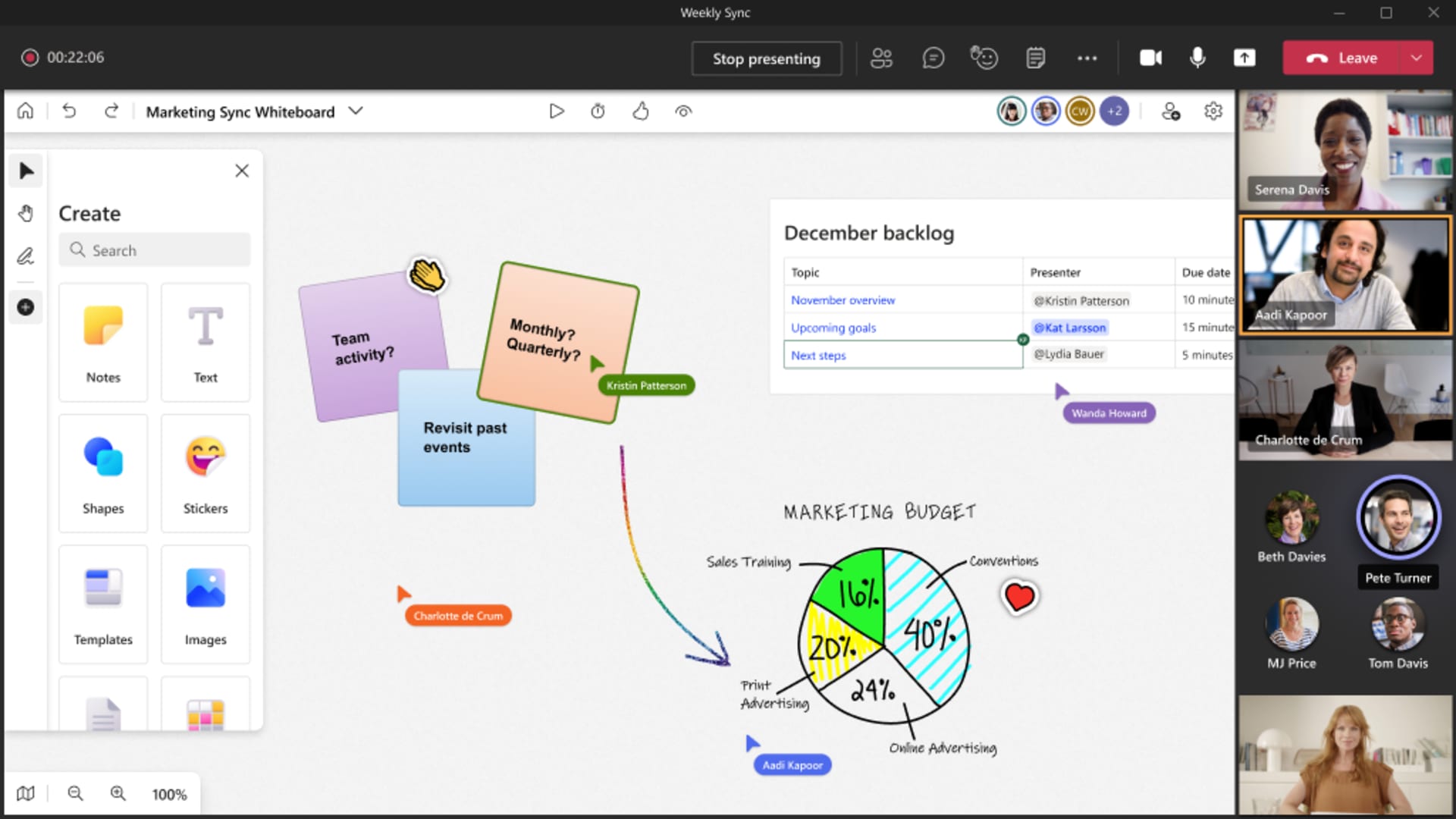
- Microsoft introduced some updates to Office apps on Thursday that are meant to help companies with a mix of remote and on-site employees.
- Demand for remote work has accelerated since the onset of Covid, leading Microsoft to add features more quickly.
- Here's a rundown of what's new in Teams, Whiteboard and more.
Microsoft on Thursday announced enhancements to Office productivity applications that are meant to improve work at companies where some people are on site and others are not.
The changes strengthen a critical part of Microsoft's business as customers change prepare to reopen their offices after closing them and shifting to remote work with the outbreak of Covid-19. Microsoft's Teams app for chat and video calls grew fast when the pandemic emerged. Now Microsoft is trying to ensure that the Office software can accommodate what it calls a hybrid scenario, where parts of the workforce are at the office while other parts continue to contribute from home.
Microsoft said it will update Teams so that people joining video calls in conference rooms can have a better view of their remote colleagues. The company pointed to new hardware for conference rooms that shows video feeds for all Teams call participants in a conference rooms.
Get Connecticut local news, weather forecasts and entertainment stories to your inbox. Sign up for NBC Connecticut newsletters.
PowerPoint is getting a laser pointer feature so that presenters can highlight components during meetings, and everyone can see even if they're not in the conference room. And even if people aren't around to work together on a document such as a task list or a meeting agenda, they can later contribute to the document in a format called a Fluid Component in OneNote, Outlook and Teams.
Microsoft is also rolling out several new features to its Whiteboard app, which lets multiple people doodle, leave sticky notes and paste images on a virtual canvas, rather than relying on physical whiteboards and blackboards in offices.
After the virus appeared, Microsoft customers "went from being interested in digital whiteboards to needing digital whiteboarding solutions yesterday," Microsoft principal product manager Ian Mikutel said. In March, the company said the number of Whiteboard's monthly active users was 12 times what it was in the previous year.
Money Report
Demand for Whiteboard has accelerated since the onset of the pandemic. This led Microsoft to add features more quickly, said Nicole Herskowitz, general manager of the Microsoft Teams communication app. Microsoft introduced Whiteboard in 2017 and offered a way for people to use it from inside Teams in 2019.
Here are some of the big changes in Whiteboard:
- New cursors in Whiteboard more clearly show what different participants are doing.
- Circles around avatars match the colors for different participants' cursors on the screen to help users keep track of who's doing what.
- People can leave feedback on specific objects by adding thumbs-up, heart and star stickers.
- New templates for kanban boards and competitive analysis are available to help people accomplish more in the app.
- Microsoft improved the experience of writing with just a mouse on PCs.
- For people drawing in the app with a stylus, Microsoft has updated Whiteboard so that the software will automatically recognize attempts to draw shapes and make them look neater.
- Support for laser pointer and Fluid Components.
- Later, the company plans to add more formal voting capabilities to Whiteboard.

The pandemic made software whiteboards more critical. Okta — which sells software that companies use to provide access to many corporate applications — said in February that between November 2019 and October 2020, start-up Miro's whiteboard program was the second-fastest-growing app among its customers, behind only Amazon Business. Miro claims to have 20 million users on its website, and its software allows for multiple users simultaneously.
The third fastest-growing app, according to Okta, was Figma, which people use to collaborate on updates to app designs. In April San Francisco-based Figma introduced FigJam, a whiteboarding tool that's integrated with its main app.
WATCH: Microsoft warns of new hack by group behind SolarWinds attack






